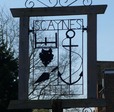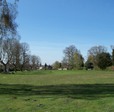

Web design © Graeme de Lande Long. Terms & Conditions.



Community Website
Scaynes Hill Village
The history of Scaynes Hill goes back centuries and in Saxon times was part of the scattered estate of the monks of St. Michael. It is mentioned in records under its original name of Henfield as early as 765 A.D. but it developed mainly in the nineteenth and early twentieth Centuries to what it is now.
Scaynes Hill straddles the busy A272, which is on the bus route between Haywards Heath 3 miles to the West and Uckfield 9 miles to the East. Haywards Heath is a town of about 23,000 with the usual range of shops one would expect to find in a town of that size. Haywards Heath has a mainline railway station on the busy London to Brighton line as well as bus routes to other more local destinations.
The principal amenities in the village include St.Augustine’s Church (C of E), Strict Baptist Chapel, C of E Primary School, the Millennium Village Centre, two pubs, a service station with mini-market, and a social club.
Scaynes Hill Village

The village of Scaynes Hill is on the A272 just to the East of Haywards Heath in West Sussex. There are about 800 residents in the village, which has two churches, a primary school, a pub, a garage and a petrol service station obvious to the casual passer by. But if you scratch the surface you will find over 30 social groups and 60 businesses that make up the social fabric of everyday life.



Village sign
St.Augustine’s Church
The Common


Scaynes Hill is surrounded by beautiful Sussex countryside with views to the South Downs and towards the Ashdown Forest to the East. There are numerous public footpaths in the area giving the possibility of some varied rural walks starting in the village without the need to get into a car. Some 10 acres of woodland adjacent to the village is managed by the Woodland Trust as open access land and provides a much used local amenity.